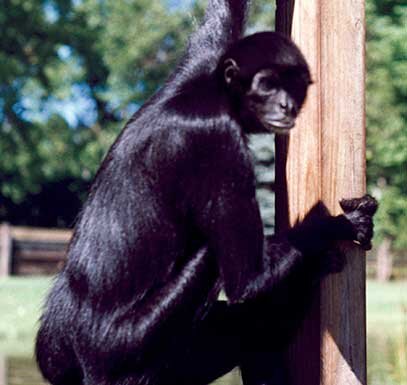ANIMALS OF SOUTH AMERICA
Meet the animals that reside at Fort Rickey Children’s Discovery Zoo who originated in South America:
ALPACA
The rare and exotic alpaca is a creature of antiquity that is rapidly gaining popularity around the world. Highly prized for their luxurious coats, the alpaca has been considered a treasure of the Andes Mountains for over 6,000 years.
Alpacas are New World camelids and look like small llamas or long-necked camels with no humps, especially when recently sheared. They have shaggy necks and camel-like faces with thick lips, pronounced noses, and long ears. Their large, expressive eyes seem to exhibit both wisdom and childlike curiousity. Easily domesticated, alpacas are friendly, gentle and curious.
Mating season: All year
Gestation: 11.5 months
Litter Size: 1 baby
BOA CONSTRICTOR
Boa Constrictors, Constrictor constrictor, are one of the largest snakes in the world, along with the Reticulated Python and Anaconda. Boas are non-poisonous but just as deadly. They ambush their prey, which means that they will hide and wait for something yummy to go by and then do a surprise attack. They use their flicking tongue to pick up the scent. Just as their name suggests, they will coil their bodies around the prey and with each breath of the prey they will constrict, or squeeze, their coils just a little tighter until the animal can no longer breath.
These snakes live in hot, tropical places and can be found both on the ground and in trees.
Boas are said to be the most beautifully colored of all snakes
Mating season: April to August
Gestation: 100-120 days
Litter Size: 10-65 young
CAPYBARA
Native to South America, the capybara is the largest rodent in the world and inhabits savannas and dense forests and lives near bodies of water. Many escapees from captivity can also be found in similar watery habitats around the world and sightings are fairly common in Florida. The capybara is a highly social species and usually lives in groups of 10–20 individuals.
Adult capybaras can grow to 4.40ft in length, stand up to 24 inches tall and typically weigh 77 to 146 lb. Capybaras also have slightly webbed feet and vestigial tails.
COLOMBIAN BLACK SPIDER MONKEY
Spider monkeys, Ateles fusciceps robustus, get their name from their spider-like appearance, due to their disproportionately long limbs and long prehensile tail. They live and move agilely through the small branches of the high forest strata using their four limbs and tail to grasp.
They are entirely day active and live in groups of variable size. Where fruit trees are small and scattered, groups of only two to five animals are seen, but where food is more abundant they live in groups of up to 30. Spider monkeys are omnivores whose diet consists mainly of fruit (80%) but also includes leaves, nuts, seeds, bark, insects, and flowers.
Mating Season: All year round
Gestation: 226-232 days
Litter size: 1 baby
Argentine black and white TEGU
The Argentine Black and White Tegu is the largest species of Tegu Lizard. This is an omnivorous lizard and can live in the tropical rain forests, savannas, and semi desserts of eastern and central South America. Tegu’s have an unusually high intelligence and can be trained and even house broken. They have been known to seek out human interaction. In the fall, like other reptiles, the Tegu goes into brumation when the temperature drops. Brumation is similar to hibernation, but while the lizard can go months without eating like hibernating animals, it must on occasion wake long enough to drink.
Tegus can run very fast and they have powerful tails the can use to defend themselves. Even a half hard swipe of his tail can leave a bruise. Males can grow to be 4 1/2 feet long and females can reach 3 feet. After brumation the tegu breeding cycle begins. A female can lay 12 to 30 eggs and is very protective of her nest! Tegu’s can live 15 to 20 years in the wild and even longer in human care.





